From decentralized finance (DeFi) to AI and physical infrastructure networks (DePIN), blockchain is reshaping how we think about systems and fields of study. The latest iteration, decentralized science (DeSci), is poised to open new doors for scientific study and research. Learn how in this comprehensive guide.
What is decentralized science (DeSci)?
Decentralized science (DeSci), pronounced “de-sigh,” is a niche movement at the intersection of science and web3. The aim is to build public infrastructure for scientific research.
Definition and core concepts
DeSci is a new and decentralized approach to research funding. It promotes collaboration among various stakeholders in scientific research.
Inspired by the original web3 ethos, DeSci aims to develop a decentralized scientific model. This model promotes transparency, accessibility, and, most importantly, democratization.
DeSci also uses blockchain technology to build a public infrastructure for scientific research and employs web3 tools, including smart contracts and decentralized autonomous organizations (DAOs) to do so.
SponsoredThe evolution and rise of DeSci
DeSci builds on the open science movement, which aims to make scientific research accessible to everyone. It emphasizes openly sharing data, methodologies, protocols, software, and publications, removing financial, legal, and technical barriers. This movement aims to transform science into a universal methodology for humanity and the planet.
While open science continues to gain momentum, its implementation faces challenges. Some of these include managing scientific resources, verifying data, ensuring proper attribution, and maintaining transparency in research processes.
Platforms like ArXiv and SciHub address some of these issues in scientific publishing by speeding up publication. However, they currently lack mechanisms for quality control and authentication.
How DeSci improves science
DeSci has the potential to significantly impact scientific research in several ways:
- Crowdfunding scientific research: DeSci platforms allow more investors and the public to fund research projects directly. This model bypasses usual funding barriers like grant applications and institutional funding. This enables more research ideas to receive the financial support needed. It democratizes funding, possibly leading to more diverse research topics and greater innovation.
- Diversifying funded projects: Crowdfunding allows the public to support projects that may not typically receive funding from traditional sources. This should allow a broader range of scientific research and can potentially lead to breakthroughs in less mainstream areas.
- Collaborative research: DeSci also enables broader and more effective collaboration among global researchers. Using decentralized platforms, researchers can share data, methodologies, and results transparently and securely without intermediaries. This enhances research reproducibility, speeds up innovation, and facilitates complex, cross-disciplinary projects worldwide.
- Open access publishing: Another key aspect of DeSci is ensuring open access to research via distributed ledger technology (DLT). This makes scientific papers and data freely accessible, combating the high costs and access restrictions of traditional publishing. It also accelerates the dissemination of knowledge and fosters further research and development.
These elements can streamline scientific progress when brought together.
Key components of DeSci
A few key components set DeSci apart from all other respective decentralized fields. Most notably, these are the intersection of blockchain and open science and the use of DAOs in scientific research.
Blockchain and open science
The characteristics of blockchain technology overlap with the needs of open science. Blockchain’s decentralized nature means no central entity controls the information, and the data is immutable.
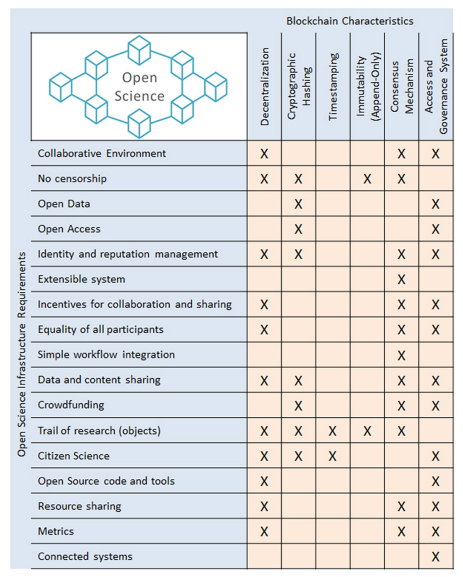
This provides a transparent and collaborative environment, supports citizen science, and enables resource and data sharing. Furthermore, the public record of all transactions provided by the blockchain improves confidence in the results of the research.
Blockchain also employs cryptography and timestamping. This ensures all recorded information is unique and allows scientists to track research history and share data and content.
Furthermore, the blockchain’s consensus mechanism requires network members’ approval. This could ensure precise calculations for metrics like download counts or citation numbers per dataset, as well as verification of metadata without intermediaries.
The role of DAOs in scientific research
DAOs were developed to allow people with a common goal to collaborate without a central authority. These organizations help align incentives among their members because everyone has a stake in the outcome.
DAOs are governed by both organization members and smart contracts. DeSci uses DAOs to democratize the process of scientific research.
For example, developing new treatments or technologies in the biotech industry involves significant research and development, often requiring extensive collaboration. Traditionally, this can be hindered by competition and IP (intellectual property) hoarding, where entities might withhold data to protect their potential profits.
DAOs can encourage sharing by establishing immutable rules for contribution and reward. This means that researchers can collaborate freely and with a predefined understanding of how IP ownership will be distributed based on contributions.
In summary, researchers working to cure the same condition or benefit from a scientific breakthrough could achieve faster results through a DAO rather than by working separately in corporate environments.
Sponsored SponsoredHow DeSci works
Most DeSci projects utilize a few common features. These are smart contracts, communities, on-chain funding, and ownership.
Smart contracts
Smart contracts automate and enforce the rules of DeSci interactions. They secure transactions and ensure compliance. These automated programs ensure that all processes are equitable for all participants.
Communities
DeSci cultivates communities around specific research interests. These communities share resources and collaborate on projects seamlessly. This also allows communities to support the research that they care about.
On-chain funding
Funding for research is raised and managed directly on the blockchain. This reduces overhead and increases transparency. It also allows researchers to continue their work without the threat of “publish or perish.”
Ownership
Contributors maintain clear ownership of their intellectual property, which is recorded on the blockchain. This ensures rights and rewards are properly allocated.
Major DeSci projects and platforms
One project at the forefront of DeSci is NobleBlocks. The network encourages cooperation and social engagement among its users rather than just operating as a standard publishing platform. NobleBlocks accomplishes this by:
- Peer review networking: Enhances the review process by connecting peers and fostering discussions.
- Promoting collaboration: Promotes partnerships across different scientific fields.
- Tokenized rewards system: Rewards reviewers and editors, encouraging a community-driven model.
- Immutable publication records: Uses blockchain to keep a permanent, unchangeable record of publications.
- Reduced costs for researchers: Lowers publication costs, broadening access for more scientists.
How it works
NobleBlocks is a blockchain-based scientific journal that decentralizes publishing and democratizes access to research findings and academic journals. Every piece of data on the NobleBlocks blockchain is recorded immutably and chronologically, making tampering near impossible. This ledger provides proof of when research findings or inventions were disclosed.
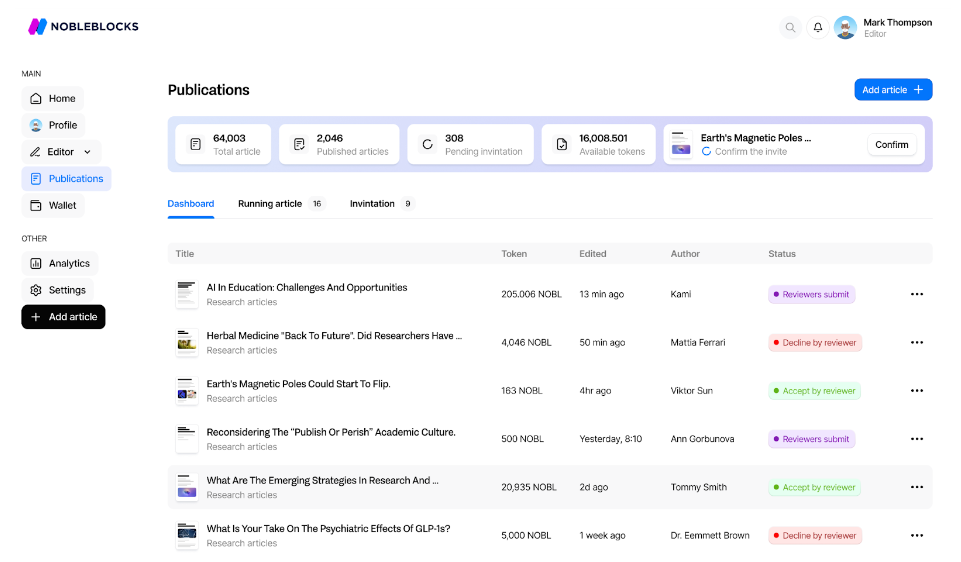
As shown in the above image, this platform is user-friendly and facilitates collaboration among authors, reviewers, and editors. Authors can submit their work and monitor its review progress, while editors can choose qualified reviewers to help with peer review decisions.
To tackle high publishing costs in traditional science, the platform eliminates steep article processing and subscription fees that restrict publishing and access to research. Authors only pay for peer review services they use, while editors and reviewers incur a nominal transaction fee to earn tokens.
SponsoredPublishing process on NobleBlocks
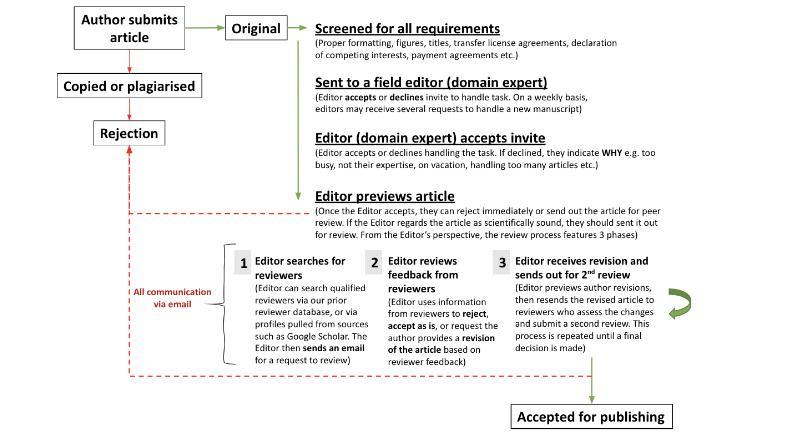
- Manuscript submission: An author submits a manuscript with title, abstract, keywords, and other details, including images and tables. They agree to pay the article processing fee and deposit tokens to the editor pool.
- Preliminary assessment: An editor will be notified, preview the title and abstract, and decide whether to handle the manuscript. If accepted, they review all details for scientific integrity and decide to either reject or move to peer review.
- Reviewer recruiting: The editor invites reviewers using a system with filters and an editable email template. After this process, reviewers gain access to the manuscript.
- Peer review: Reviewers assess the manuscript’s scientific quality and audience impact, providing feedback and recommendations. Then, the editor decides to accept, reject, or request revisions from the author.
- Copyediting: Approved manuscripts are prepared for publication through copyediting and formatting. The author makes a final deposit for these services.
- Publication and archiving: The manuscript is published on the blockchain, timestamped, and archived.
NOBL tokenomics
The native utility token of the NobleBlocks platform is NOBL. Users can buy NOBL via Uniswap. These tokens allow users to perform tasks such as managing article submissions and rewarding editors and reviewers.
In addition, users can exchange NOBL in peer-to-peer blockchain transactions. There are one billion NOBL available in total. There were approximately 86 million NOBL tokens in use at launch. Following the launch, the annual release rate is 100 million NOBL.
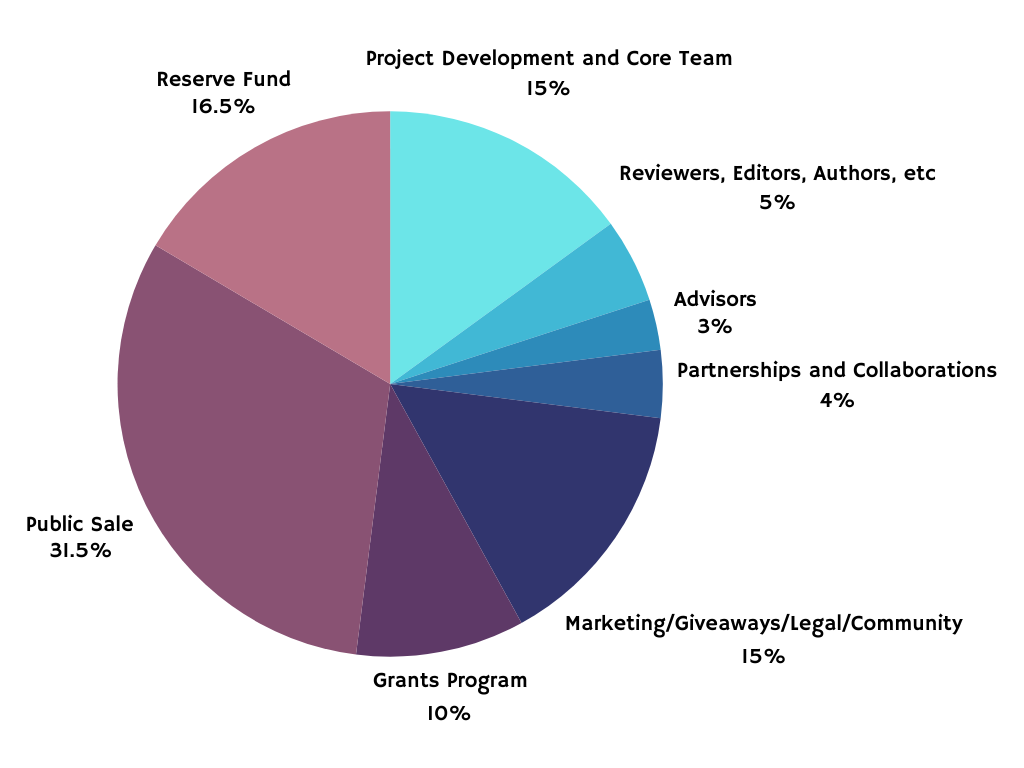
The largest allocation of NOBL was distributed via the public sale (31.5%), followed by the reserve fund (16.5%), a portion distributed to the team (15%), and marketing, giveaways, legal, and community (15%). The remaining supply goes to the grants program (10%), reviewers, editors, and authors (5%), advisors (3%), and partnerships and collaborations (4%).
Benefits of decentralized science
To understand how DeSci benefits the scientific community, we must first understand the existing problems with the current scientific environment. Patrick Joyce, Co-founder & COO at ResearchHub, highlights a critical issue:
In the last 20 years, we’ve seen a reduction in the efficacy of our ability to produce new technologies because scientists are more concerned with publishing frequently and accumulating citations rather than creating verifiable new knowledge.
Patrick Joyce: YouTube
This publish-or-perish culture has led to various issues, such as the erosion of scientific integrity. It has also resulted in another problem within science and academia called the replication crisis.
The replication crisis is a scientific research problem that makes it difficult to reproduce the results of studies. This can lead to concerns about whether previous research findings are valid.
Transparency and accessibility
One of the most obvious benefits of DeSci is that it promotes transparency and accessibility in scientific research. All exchanges of knowledge are transparently recorded. This allows the public and scientific community to verify scientific outputs through an accessible and verifiable platform.
This approach promotes trust and encourages an inclusive scientific process. When research methodologies and inputs are transparent, the public and scientific communities have more confidence in the outputs, thereby correcting the replication problem.
In the same way that blockchains have data availability to reproduce the state of a blockchain, transparent research methodologies allow scientists or the public to reproduce scientific experiments.
Innovation in funding and collaboration
DeSci also introduces innovative approaches to funding and collaboration within the scientific community by leveraging DAOs and smart contracts. This includes new funding models like tokenized grants or crowdfunding for research projects, which offer financial support for researchers.
Sponsored SponsoredAdditionally, the decentralized nature of blockchain allows new collaborative opportunities, breaking down traditional barriers between disciplines and geographies and accelerating scientific innovation and discovery. In this way, researchers can mitigate the necessity to publish or perish, as they will have community funding rather than corporate funding.
Decentralized science introduces a new way of valuing and rewarding scientific efforts, creating trusted research environments for collaboration rather than competition.
Challenges facing DeSci
In 2025, DeSci is growing but has yet to take over the scientific world. Here’s some insight into the industry’s current challenges:
1. Scalability issues
Most notably, scientists, computer scientists aside, are not typically crypto natives. They may find it difficult to traverse the complexities of wallet security, chain abstraction, smart contracts, and other distributed ledger technologies. To scale DeSci adoption, the participation of scientists must grow. More scientists are required to help build this groundbreaking field.
Another problem that the field faces is similar to the governance issue in DAOs and blockchain consensus. The goal is accessibility for everyone, even if it means some will be unqualified for certain roles. In other words, DeSci may experience an issue where unqualified participants upvote low-value research out of ignorance, political alliances, or financial incentives.
2. Intellectual property rights
One of the many questions that the DAOs of today have yet to figure out is property rights (IP) management. Scientific research is often implemented in collaboration with institutions or companies. Researchers often lack full property rights over the results of their findings or may transfer ownership.
To fully realize the potential of DeSci, innovators must create a way to manage the legal ramifications of any foreseeable problems that may arise between relevant parties, such as researchers, institutions, companies, or public funders.
DeSci vs. TradSci
| DeSci | TradSci |
|---|---|
| Decentralized public funding | Centralized corporate and institutional funding |
| Enhanced collaboration and global inclusion | Limited collaboration |
| Transparent research findings | Information hoarding |
| Paid peer reviews | Unpaid peer reviews |
| Collaboration amongst the public and science community | Better legal management of intellectual property |
How does Ethereum support DeSci?
So far, this guide has discussed what DeSci needs on the scientific side to succeed. On the blockchain side, DeSci systems need security, low fees, economic, finality, and cryptographic security.
Security can mean many things to different people. In this context, DeSci will need robust decentralized apps with economic security. This is something that Ethereum already provides.
Ethereum gas fees and the economic security provided by staker revenue are enough to bootstrap the chain to secure apps. Since October 2022, Ethereum has generated almost $1 billion in earnings. This helps to combat attacks on chain stability, which can impact DApps if successful.
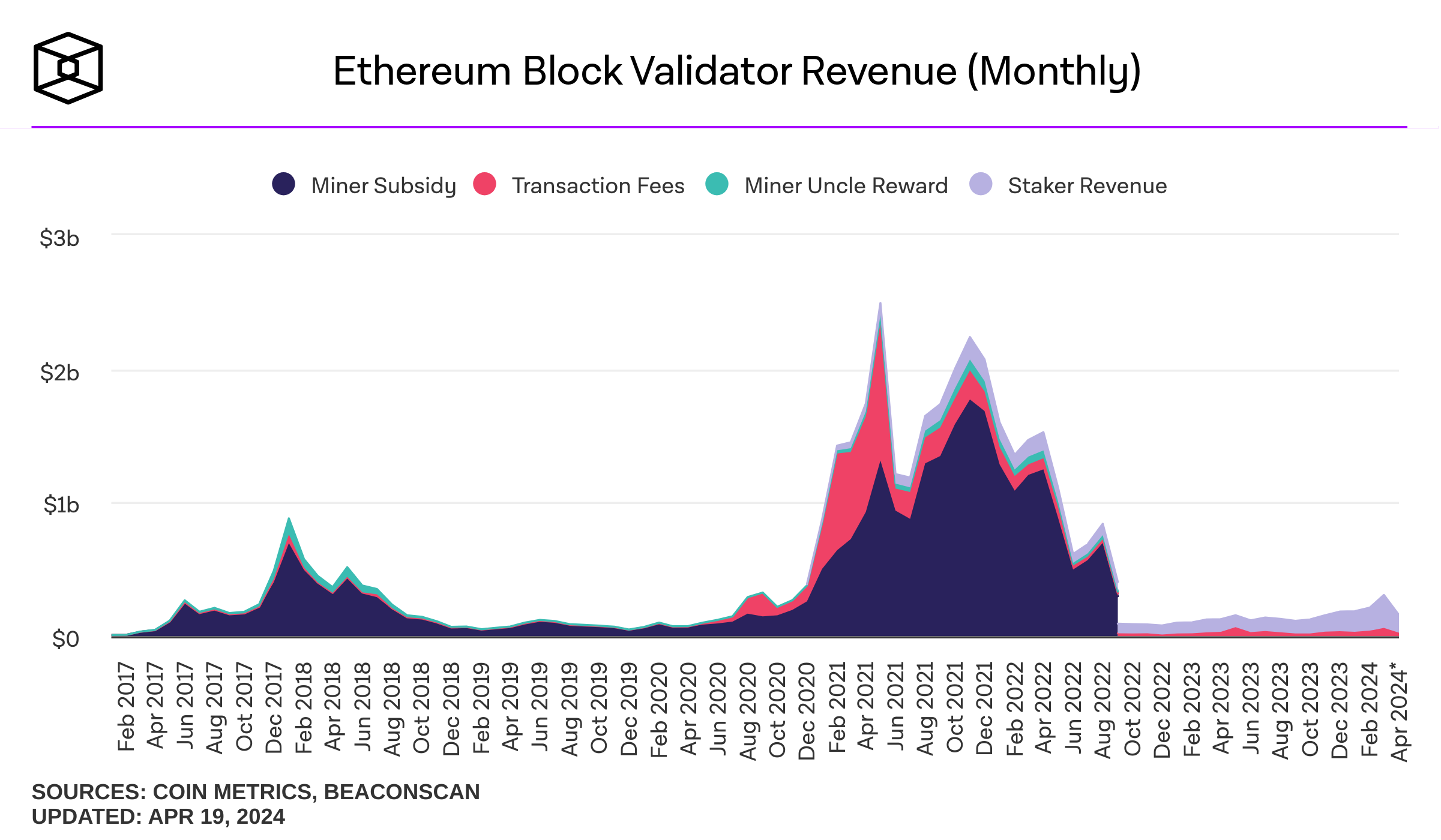
Ethereum’s decentralized nature also means that no single entity controls the network. This reduces risks associated with central points of failure, such as hacking or corruption.
Lastly, once data is recorded on the Ethereum blockchain, it cannot be altered. This immutability is crucial for the integrity of the applications running on it, as it prevents tampering with transaction histories and application states.
DeSci: The next big trend?
DeSci is shaping into one of the next crypto sectors with huge growth potential, with projects like Nobleblocks paving the way. With the engagement of the scientific community, the decentralization of science can benefit the entire industry, with transparent research and equitable compensation likely to, in turn, yield better research results.
Frequently asked questions
Descentralized science (DeSci) is a movement that addresses some of the many problems inherent within the modern science field. DeSci is a new approach to research funding and publishing. It allows researchers to receive funding, and conduct and promote methodologies and research findings in a transparent way.
DeSci has many goals. The most notable are transparent and accessible research. Another important goal of DeSci is to ensure that researchers receive proper funding without the necessity to information hoard, due to IP rights.
DeSci changes the traditional scientific research processes by allowing for crowdfunding in some circumstances. It also allows for more transparent IP rights concerning research findings and innovation. One of the most prominent use cases for DeSci is for eliminating paywalls for important research.
Although DeSci is a fairly nascent field, there are a few notable projects. Some of the most notable DeSci projects are NobleBlocks, ResearchHub, and VitaDAO. Each project addresses some aspect of the problems inherent to traditional science.
There are three primary ways to contribute to DeSci projects. Users can participate as authors or researchers, peer reviewers, or funders. Each role is essentially to the proliferation of sound scientific research.
There are many risks to DeSci today. The most important is perhaps the management of property rights. Creators must also find a way to ensure that only sound research is promoted. This is a difficult problem to solve considering the open nature of blockchain technology.
In 2025, there is not a surefire way to manage IP rights in DeSci. However, the solution will most likely involve the marriage of smart contracts, oracles, and legal means. Collaboration amongst the scientific community and governing bodies is necessary to improve IP management in DeSci.
Centralized and decentralized have very different meanings in blockchain depending on the definition. In many cases, centralized can mean that a project or token is controlled by an individual or group. Decentralized often means that no single person or group holds administration keys, liquidity, or the majority of a token supply.
A decentralized currency is a medium of exchange that does not have single issuer. Bitcoin is popularly known as being the first decentralized currency. However, many people also consider Bitcoin to be a store of value today.
Decentralization can be different on many levels. For example, a blockchain is considered decentralized when it has a large distribution of nodes geographically, a large number of validators or miners, or when the majority of nodes are not operated by a single entity. However, tokens are considered decentralized when they do not have admin keys, the token supply is distributed among multiple holders, or the smart contract does not have intentional vulnerabilities for a creator to rug pull the project.

